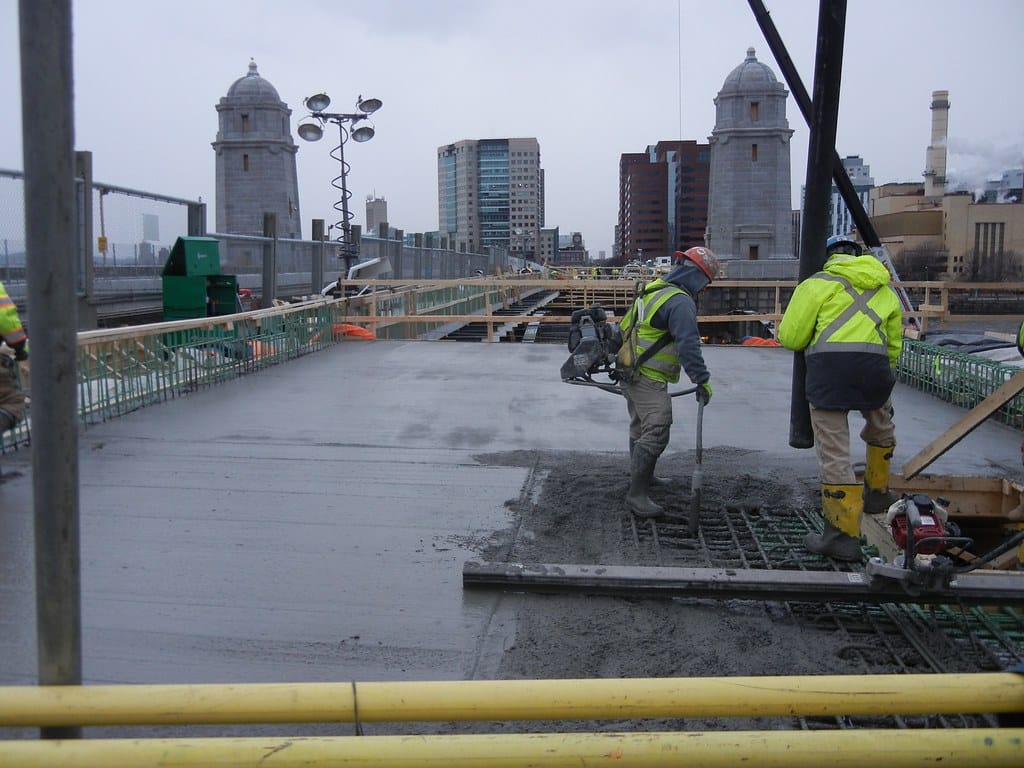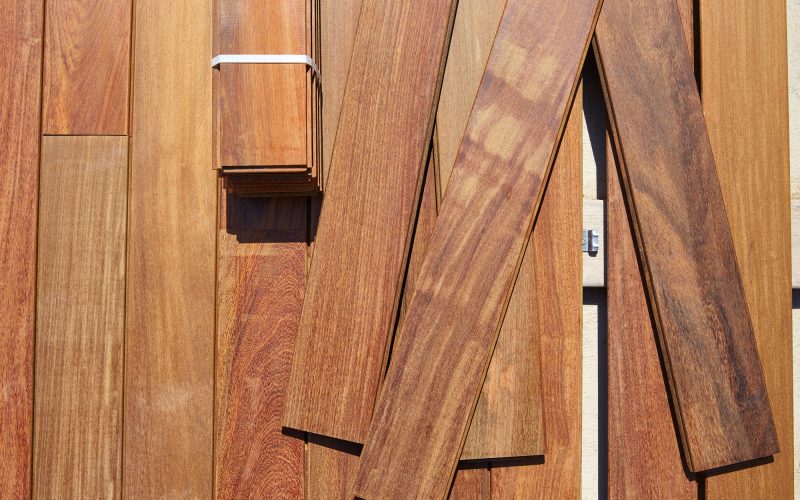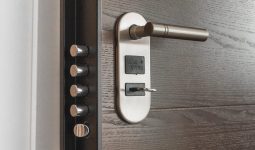The benefit of owning a house is having access to your deck in the backyard. It may increase your property’s value and be a fun addition to your house.
Additionally, you may add a deck to your house without spending much money by choosing some of the best decking alternatives.
For many years, homeowners’ preferred alternative was a wooden deck, which might be more costly to build and install depending on its size.
They need a lot of maintenance to keep them all looking good year after year. However, people are now investigating other types of decks besides wooden ones.
If you’re considering adding a deck to your house or improving your existing one but don’t want anything expensive or need a lot of maintenance, you should check into deck alternatives.
We’ll discuss some of the best decking alternatives that perform at least as well as traditional wood decks.
1. Concrete Decking

Traditional wood decks may be replaced with concrete decking, and pattern-imprinted concrete is a particularly attractive and cost-effective material option.
In the end, you have the advantages of sturdy concrete and the beauty of wood decking.
Although you may have the concrete in whatever color you like with a wooden design, it is meant to seem as much like wood as possible.
Concrete is one of the best decking alternatives because it prevents splinters, discoloration, and ongoing maintenance requirements of wooden decks. Also, the boards don’t warp.
To avoid tripping or sliding, top your concrete deck with a matte or gloss surface and an anti-slip chemical.
Since concrete is simpler to work with, you may add elements to your deck, like pits or mounds, and your deck will hold up even if there is a lot of water around.
Concrete decking is a low-maintenance, low-effort, low-investment, long-lasting, attractive, sturdy, and adaptable alternative because of all of these factors.
Over time, the maintenance savings will also cover the cost.
2. PVC Decking
PVC decking seems to be here to stay, even if many dislike the words “plastic” and “decking” together.
It is becoming more popular among homeowners since it is simple to install, strong (so there are no splinters), and quiet (no creaks and noises).
They are often simple enough for most people to build independently. PVC decks, constructed of plastic, are also resistant to decay and insects.
If cost and convenience of installation are your top concerns, this is one of the best decking alternatives for you.
It’s plastic, which isn’t great for the environment, but it’s excellent for many people’s wallets since it’s one of the least expensive decking alternatives, costing around $4 per board.
You get all the advantages of plastic with the beauty of wood since it has a similar appearance.
PVC, however, may deteriorate with time, particularly when exposed to prolonged sunshine, and if it is not thick enough, it can bend, bow, or become brittle.
3. Interlocking Grass Deck Tiles
Interlocking grass deck tiles are a great choice if you want a deck that resembles your lawn without the upkeep of having a real lawn.
These artificial deck tiles include long-lasting, high-quality fake grass that quickly improves the area without pesticides, fertilizers, or mowing.
Some tiles also have great drainage systems, making them simple to clean. These tiles’ attractiveness increases because they are non-toxic and environmentally friendly.
One drawback of these tiles is that you may need to apply backup glue to hold them in place.
Aside from that, these tiles are a terrific investment since they are flame resistant, excellent for all weather and climatic conditions, and capable of relieving pressure and shock.
If you don’t want to perform any care and are merely covering a very small backyard area or anything, it’s okay to use some artificial grass.
4. Vinyl Decking
The inexpensive vinyl is about to take over decks after dominating kitchens worldwide. Similar to vinyl planks and tiles for the kitchen, vinyl decks are popular for outdoor decoration.
You can choose a waterproof membrane to cover basic plywood decks, purchase DIY kits, or hire experts to install it. However, keep in mind that each choice’s price continues to increase.
Price-wise, it is still one of the less expensive options for decking. Vinyl is durable and resistant to UV radiation, water, wear, and other environmental factors.
Several companies provide vinyl decking solutions, including brands with shock-absorbing comfort coatings and resistance to fading, staining, and scratching.
Vinyl may also cover an existing deck that is beyond its prime.
However, if you don’t invest in the correct brand, vinyl may be fairly expensive, is not biodegradable, gathers dust, and can eventually become brittle or fade.
In terms of cleaning, it is a practical alternative to decking made of wood. This is one of the best decking alternatives.
5. Interlocking Garage Flooring Tiles
These Grid-Loc floor tiles are designed to resist the most severe conditions, particularly those in garages.
As a result, they are built to support exceptionally large rolling vehicle loads.
They can withstand potentially harmful chemicals, grease, oil, petroleum products, and other substances.
Installing them is simple since you snap together adjacent garage floor tiles to create a long-lasting garage floor.
They are slip-resistant, stain-resistant, and UV-stable. They provide high-quality substitutes for garage tiles with a 12-year guarantee.
6. Composite Decking
Thanks to the material’s strength and durability, composite decking is one of the best decking alternatives that is rapidly rising in popularity.
Composite decking is made of recycled plastic and wood fibers, making it resistant to UV radiation, pests, slips, and decay.
Composite decking may meet all of your decking requirements. However, composite decking might cost much more than conventional wooden decks.
Aside from their inexpensive cost, composite decks are renowned for being sturdy, long-lasting, simple to build, and minimal maintenance.
Additionally, even if the final product is not biodegradable, the fact that it was created from recycled materials gives it some extra points as a substitute for wood decking.
Make sure to choose your composite deck wisely since some tend to fade over time or seem unnatural and tacky, and others don’t follow construction requirements.
Remember that the joists must be placed closely together; proper construction is crucial to avoid bowing or sagging.
7. Rubber Paver Tiles
Interlocking tiles, known as rubber paver tiles, are created from a micro-porous granular rubber material.
This implies that rubber paver tiles are long-lasting, resistant to deterioration, and provide excellent flexibility, making them pleasant for your feet on your porch.
These tiles are perfect for outdoor use since they are water-permeable and have non-slip surfaces even during heavy downpours.
The clever interlocking construction makes it possible to install these tiles quickly without needing glue.
Before installation, level off or trim any uneven ground, which might result in uneven results.
Also, remember that thinners, gasoline, engine oil, and other petroleum-based solvents cannot be used with rubber paver tiles. This is one of the best decking alternatives.
8. Aluminum Decking
Aluminum is a cost-effective alternative resistant to rot, termites, mildew, and corrosion. It is a huge comfort not to deal with any termite.
Aluminum has been named “the most durable decking material available” because of its unrivaled strength, longevity, and exquisite finish.
Due to its small weight, it’s also quite simple to handle and install and needs very little upkeep.
Additionally, it gets significant brownie points for being recyclable.
On the other hand, aluminum won’t even come close to giving you the same appearance as wood if that’s what you’re going for in terms of beauty.
Additionally, it may be rather loud (particularly when it rains), difficult to locate, more costly than other materials, and provide very few color options.
9. Bamboo Decking
Due to the strength of its fibers, the pulp within, and its capacity to endure moisture, bamboo has taken the world by storm and been incorporated into various things.
Due to its very soft nature, the pulp within the bamboo has been extracted and used to manufacture anything from cushions to quilt batting.
Bamboo decking comes in two different varieties: woven fibers and non-woven fibers. Undoubtedly, the woven kind is the strongest of the two.
Bamboo is beautiful by nature and can make a long-lasting deck in many climates if properly cared for.
Any deck made of wood will need maintenance to keep it looking its best. Bamboo is no exception and requires sealing, staining, or coloring.
Applying a layer of sealer to it in its natural form is not advised since it will fade with time.
Bamboo won’t grow well in places with much rain, floods, puddling, or marshy lands. It will degrade and support mold.
Although bamboo in its woven form is significantly more resistant to this problem, it is still not waterproof.
Bamboo will work effectively for you in typical damp areas and hot climates. This is one of the best decking alternatives.








